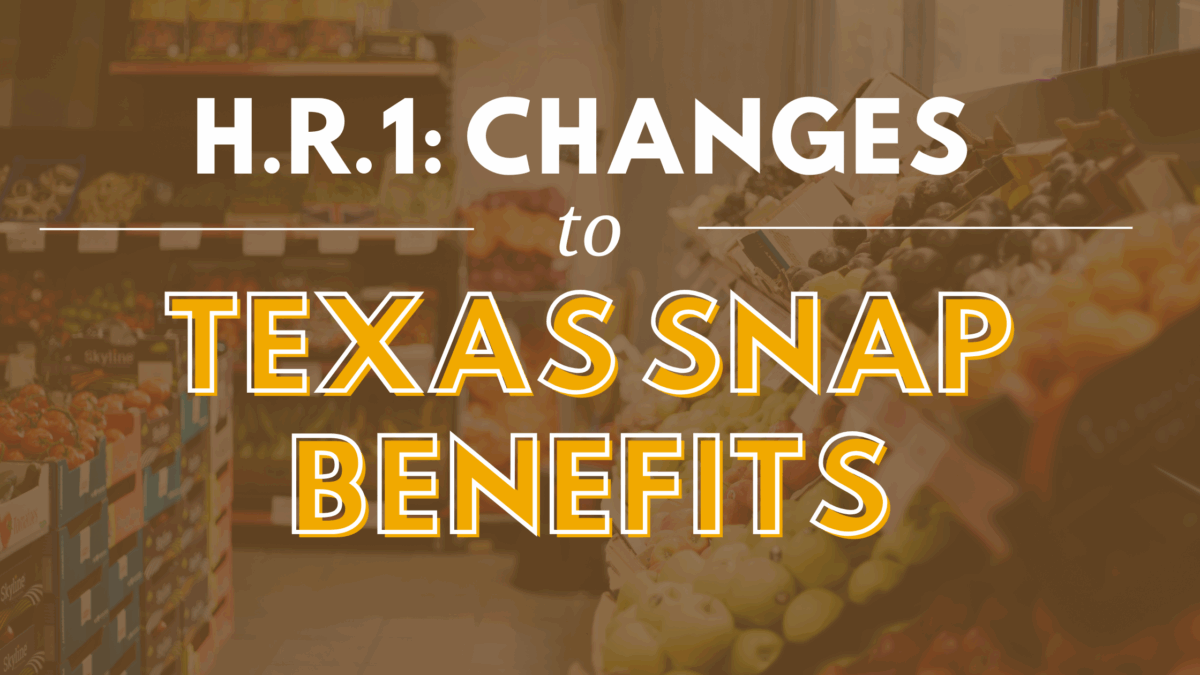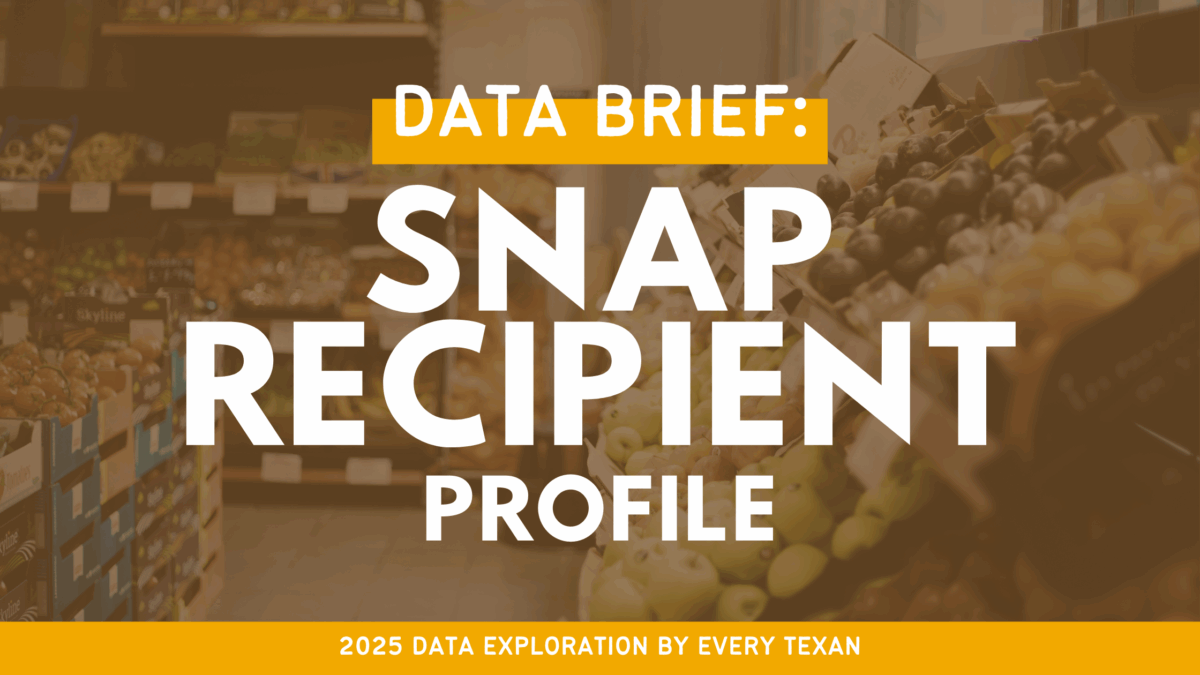
Government Shutdown Impact on Texas SNAP: What To Expect and Do Today
Twitter Facebook Linkedin Updated Nov. 6, 2025 As we enter week six of the federal government shutdown, the longest in our nation’s history, 3.5 million Texans who rely on SNAP
CACFP served 230 millions meals in Texas in 2019.
Source: Texas Department of Agriculture
CACFP’s mission is to contribute to the health and wellness of vulnerable populations, including children in low-income neighborhoods, people with disabilities, and elderly Texans. By helping care centers stretch their dollars, CACFP helps make the cost of care more affordable for working families.

The Child and Adult Care Food Program (CACFP) supports the health and wellness of low-income children, people with disabilities and elderly Texans, by helping feed these at-risk populations while their parents or caretakers are working. Child care centers and homes, after-school programs, adult day care centers and emergency shelters participate in CACFP to provide nutritious meals and snacks to individuals in their care at low or no cost to families.
Child care centers and homes have traditionally been the largest participants in CACFP. Sites must be located in low-income areas where the majority of children are eligible for free or reduced lunch or at least 25 percent of the children enrolled are low-income. A smaller number of adult day care centers also participate as do schools and providers offering after-school programs.
The Texas Department of Agriculture (TDA) administers the CACFP program in Texas. TDA is tasked with confirming the eligibility of providers and sites, approving payments, and ensuring that all meals served meet the program’s nutritional guidelines. Organizations that participate in CACFP record the number of meals and snacks they serve, andTDA reimburses them using federal funds at different rates, based on type of meal served (breakfast, lunch, supper or snack), the type of care center or program, and the share of low-income children served by the care center.
The vast majority of CACFP funds go directly to food costs for participating sites. A small portion goes towards administrative funding for organizational sponsors, which can receive small amounts of funding to support tasks such as reviewing the accuracy of meal counts and training. By helping care centers stretch their dollars, CACFP helps make the cost of care more affordable for working families.
Many eligible schools and child care providers do not participate in CACFP because they are not aware of the program.

Twitter Facebook Linkedin Updated Nov. 6, 2025 As we enter week six of the federal government shutdown, the longest in our nation’s history, 3.5 million Texans who rely on SNAP

News is buzzing with details of the recently enacted H.R.1 (coined the “One, Big Beautiful Bill Act”) which will affect the Supplemental Nutrition Assistance Program (SNAP) and Medicaid programs millions

The Supplemental Nutrition Assistance Program (SNAP) remains a cornerstone program to the food safety net millions of Texans rely on. In 2024, 3.47 million Texans (11.4% of the state population)

Twitter Facebook Linkedin Recent federal proposals suggest states be required to contribute 5%, 10%, or even 25% of the total cost of Supplemental Nutrition Assistance Program (SNAP) benefits. For Texas,